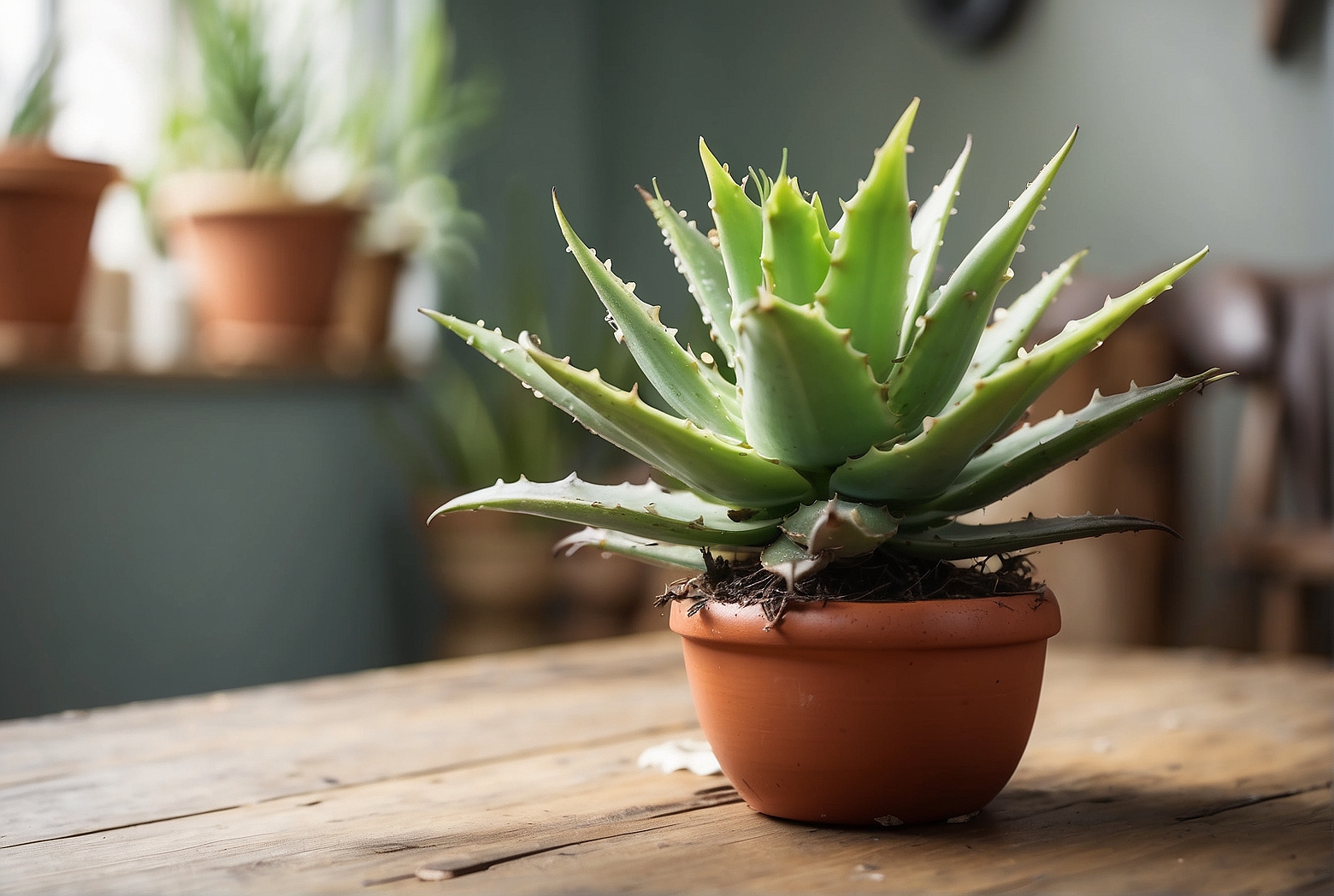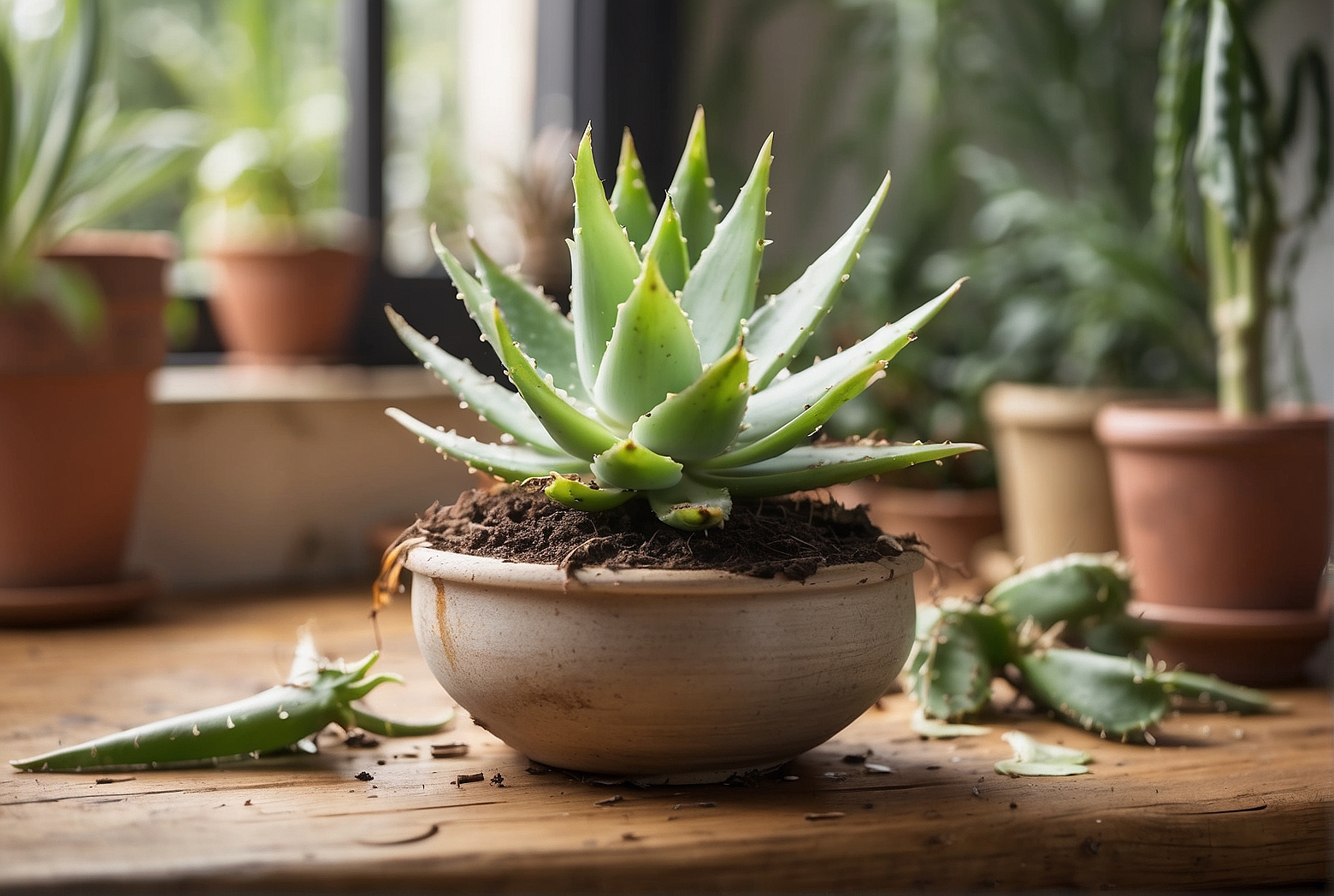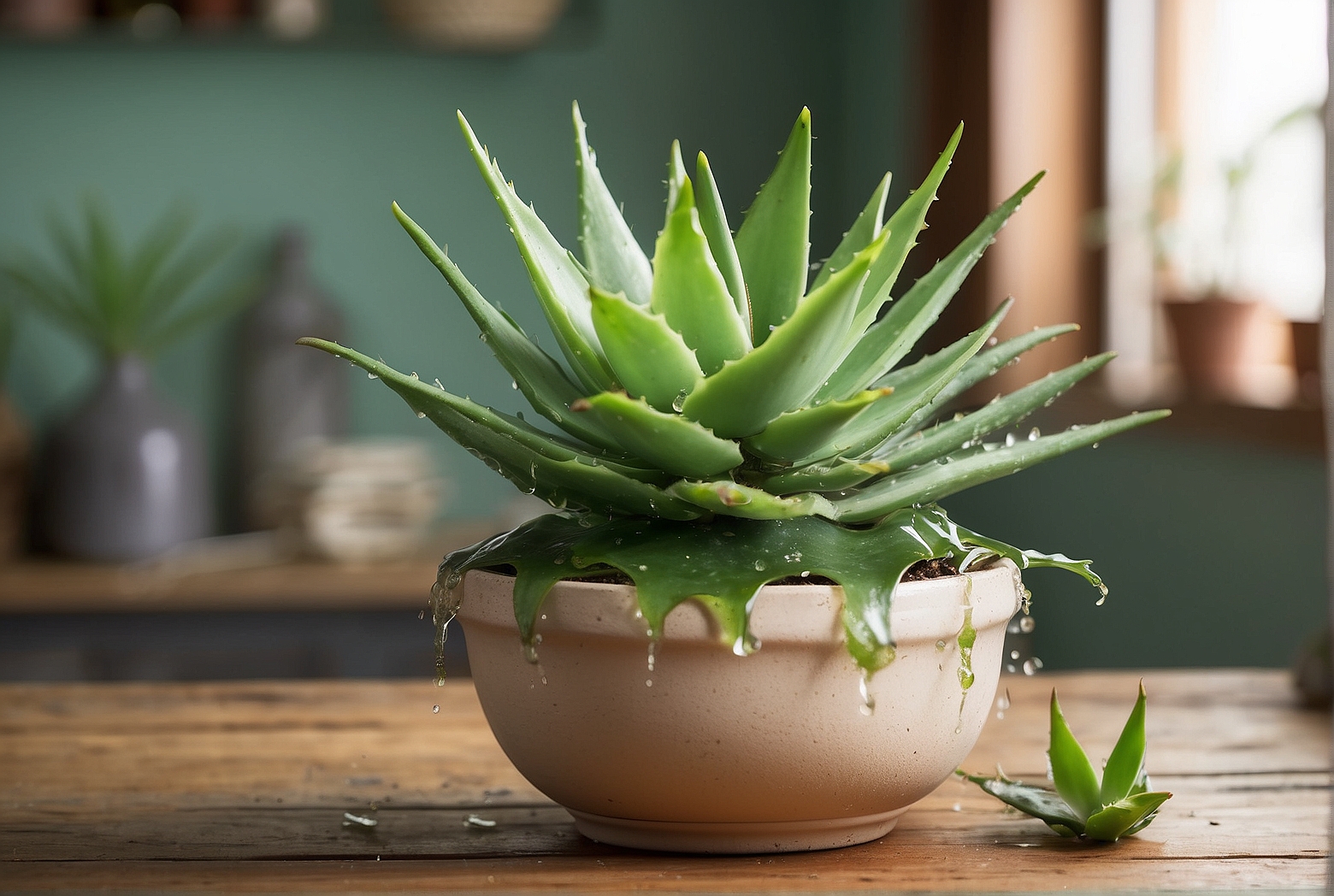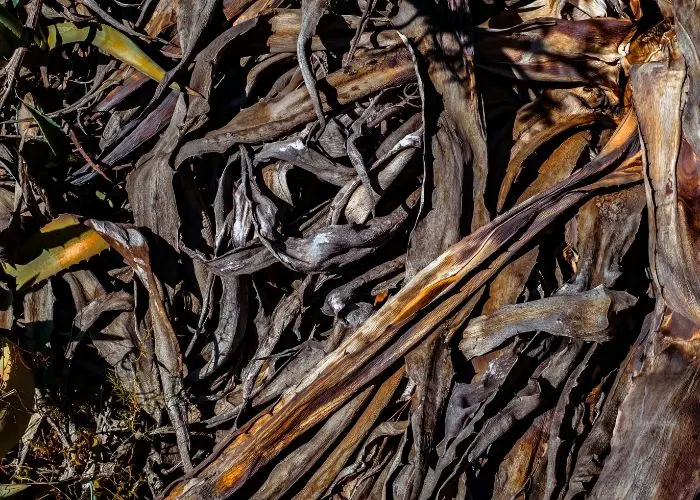Last Updated on March 27, 2024 by Fabiola L.
Having an aloe plant falling over is not a good sight and means you’re doing something wrong. Whether it be the whole pot tipping over or the leaves dropping, you’re in for an investigation. There are several reasons for this happening, but the good news is you can fix almost all of them.
Aloe plants are easy to grow and won’t affect your daily free time. Anyone with a brown thumb can easily get an aloe vera pot for their office window. However, inexperienced plant lovers can give the plant more attention than it needs, leading to more trouble.
Read on to find out the common mistakes that lead to an aloe plant falling over.
Aloe Plant’s Natural Form
There are several aloe species, with the aloe vera being the most common houseplant. It has thick, almost sword-like leaves, broader at the base, and thin out in length. The edges are finished with small sharp teeth, giving out the fact that the aloe is succulent.
The aloe leaves are filled with a thick gel, making them relatively heavy. But the heaviness is rarely the reason for an aloe plant falling over. If the leaves are droopy instead of perky, there is another underlying issue.

Why Is My Aloe Plant Drooping
When you’re someone with limited gardening experience, it’s not uncommon to forget your plants or go overboard with caring. Here are the common mistakes and reasons for an aloe plant falling over. It might require a little inspection on your side to find which (or how many!) of these apply to your plant.
Watering Problems
Aloe plants are succulents and do best when you forget to water them. But skipping too much watering leads the plant to suck moisture from the leaves. Then the leaves wilt and droop.
Overwatering is extremely dangerous. Excessive moisture can cause root rot and decay of the whole plant. It can also make the pot too heavy and easy to flip over.
The ideal watering schedule for aloe is once a week or when the top 2 inches of the soil are completely dry.

Insufficient Light
Aloe left in the dark can develop runny leaves or completely stop growing. On the other hand, exposing the aloe to too much sunlight can cause burns. So if you’re bringing a new plant home, or repositioning the one you already own, do it in phases.
Each day expose the pot to more and more sunlight. Optimally, aim for at least 6 hours of indirect bright sunlight. Continuous lack of light will lead to the leave of the aloe plant falling over.
Temperature Shock
Aloe plants thrive at a tropical temperature and don’t require any humidity. Some species can survive temperatures as low as 35°F, but the common aloe vera is fragile below 55°F. Exposing it to a cold temperature can cause the gel in the leaves to freeze. As it defrosts, the leaves will droop.
A constant temperature is crucial for the aloe. Keep the thermometer inside between 60°F and 70°F. If you need to move the plant to a different location, slowly introduce it to the change to avoid a temperature shock.
Pot Size
As the aloe grows, the roots develop, and the pot becomes insufficient. The amount of soil no longer provides the necessary nutrients, and the space puts strain on the development. If you don’t transplant the aloe right at that moment, it becomes erratic, and the leaves start wilting.
But transplanting it to a big pot can also lead to drooping. As a rule of thumb, always pick a pot in which the roots fill up 2/3. Then, transplant it once a year to avoid the aloe plant falling over.
Pests
Aphids are the number one pest that loves to feed on aloe leaves. They such on the gel, depriving the leaves of moisture and resulting in the aloe plant falling over.
A healthy aloe rarely suffers from an attack of aphids. They can cause some damage but nothing too extreme. But an already fragile plant that’s suffered overwatering or other stress, it’s the perfect target for these pests.
Inspect the leaves for dark bumps and black mold. Introduce some ladybugs to your plant or use a safe pesticide to remove the aphids.
Diseases That Cause Aloe Plants To Droop
Aloe is a hardy plant, but it can suffer root damage and fungal disease. Root rot results from overwatering or poor drainage and often leads to soft, mushy roots. As a result, the roots no longer transfer food and moisture to the leaves, which wilt and fall over.
The fungal disease includes aloe rust. This disease causes spots on the leaves, often black, yellow, or paler. On the underside of the leaf, you might notice spores. Affected leaves usually lead to the whole aloe plant falling over.
Why A Top Heavy Aloe Plant Tips Over
If your aloe has grown so much that it tips over, you’re doing an extraordinary job! However, there are a few steps to consider in order to keep it healthy and thriving.
- Remove the old heavy leaves from the outer side. Store them or extract the gel for external use. Do this with a sterilized knife and cut near the base of the plant.
- Transplant the aloe into a bigger pot. Do so carefully without breaking the leaves.
- If you live in USDA Hardiness zones 9 to 12, transfer the plant into your garden. The big aloe will thrive in the new soil.
- When living in a small space, check the plant for aloe pups. The should be in the soil near the base. Pick the baby plants and discard the old plant. Or, better, gift it to a friend!
Bottom Line: Aloe Plant Falling Over – What’s Wrong?
An aloe plant falling over is a sight of oversights in care. Stick to the recommended watering schedule except for when your plant is under intense sunlight most of the day. Check for pests and diseases.
Ensure a suitable size pot with good drainage. Too much moisture helps fungus develop quickly and attack your plant. A top-heavy plant can also be the cause of an aloe plant falling over. Trim your aloe regularly and transplant once a year.
Why does my aloe plant not stand up?
A droopy aloe plant is a sign of improper care, pests, or disease. Make sure you're watering your plant according to its needs, provide at least 6 hours of sunlight and keep it at an ideal temperature. Look for signs of disease by checking the leaves for spots and mushiness.
Mary is a passionate gardener who loves spending her days getting her hands dirty and nurturing her plants. She‘s an avid reader of gardening magazines and is always looking for new ways to make her garden thrive. When not outside tending to her plants, Mary can be found inside reading up on the latest gardening trends, comparing notes with fellow gardeners, and finding the perfect pottery planter for her next planting project.



